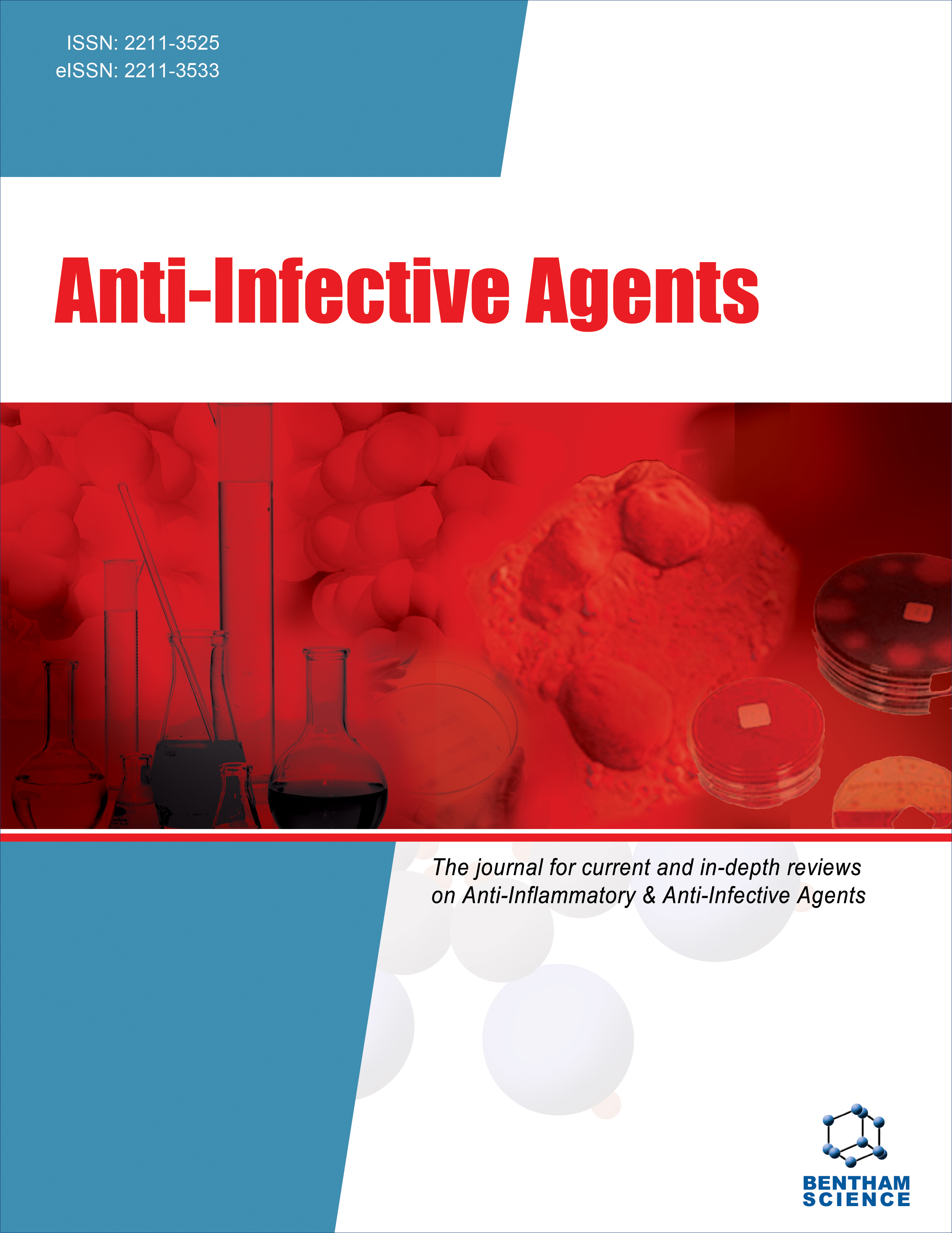-
s Prophylactic and Therapeutic Treatments' Effect of Moringa Oleifera Methanol Extract on Cryptosporidium Infection in Immunosuppressed Mice
- Source: Anti-Infective Agents, Volume 17, Issue 2, Aug 2019, p. 130 - 137
-
- 01 Aug 2019
Abstract
Background: As natural herbs and medicinal plants extracts are widely used as alternative treatments for different parasitic diseases, some have been tested on Cryptosporidium either in vitro or in vivo. This study assessed the prophylactic and therapeutic treatments' effect of Moringa oleifera (M. oleifera) leaves methanol extract on immunosuppressed-Cryptosporidium infected mice. Methods: The evaluation was carried out by Cryptosporidium oocysts count in fecal samples, histopathological changes in the intestinal tissues, determination of IFN-γ level in mice sera and measuring the antioxidant activity in the intestinal tissues. Results: Prophylactic treatment by M. oleifera extract lowered Cryptosporidium oocysts shedding from immunosuppressed-infected mice although there was no complete elimination of the parasite. However, therapeutic treatment induced a significant reduction in Cryptosporidium oocysts counts by 91.8% higher than that of the drug control (nitazoxanide) group (77.2%). Histopathologically, the intestinal tissues from immunosuppressed-Cryptosporidium infected mice showed loss of brush border with severe villous atrophy and extensive necrosis. M. oleifera prophylactic treatment induced a moderate improvement of the pathological changes. However, the villi in M. oleifera therapeutic treated mice retained their normal appearance with minimal inflammatory cells. It was observed that M. oleifera extract induced a significant upregulation of IFN-γ in both prophylactic and therapeutic treated groups compared to that of the infected untreated group. In addition, M. oleifera leaves extract exhibited a significant antioxidant activity by reducing the levels of Nitric Oxide (NO) and Malondialdehyde (MDA) and increasing Superoxide Dismutase (SOD) level in the intestinal tissues compared to those of the infected and drug controls. Conclusion: M. oleifera leaves extract has potent prophylactic and therapeutic activities against infection with Cryptosporidium.


